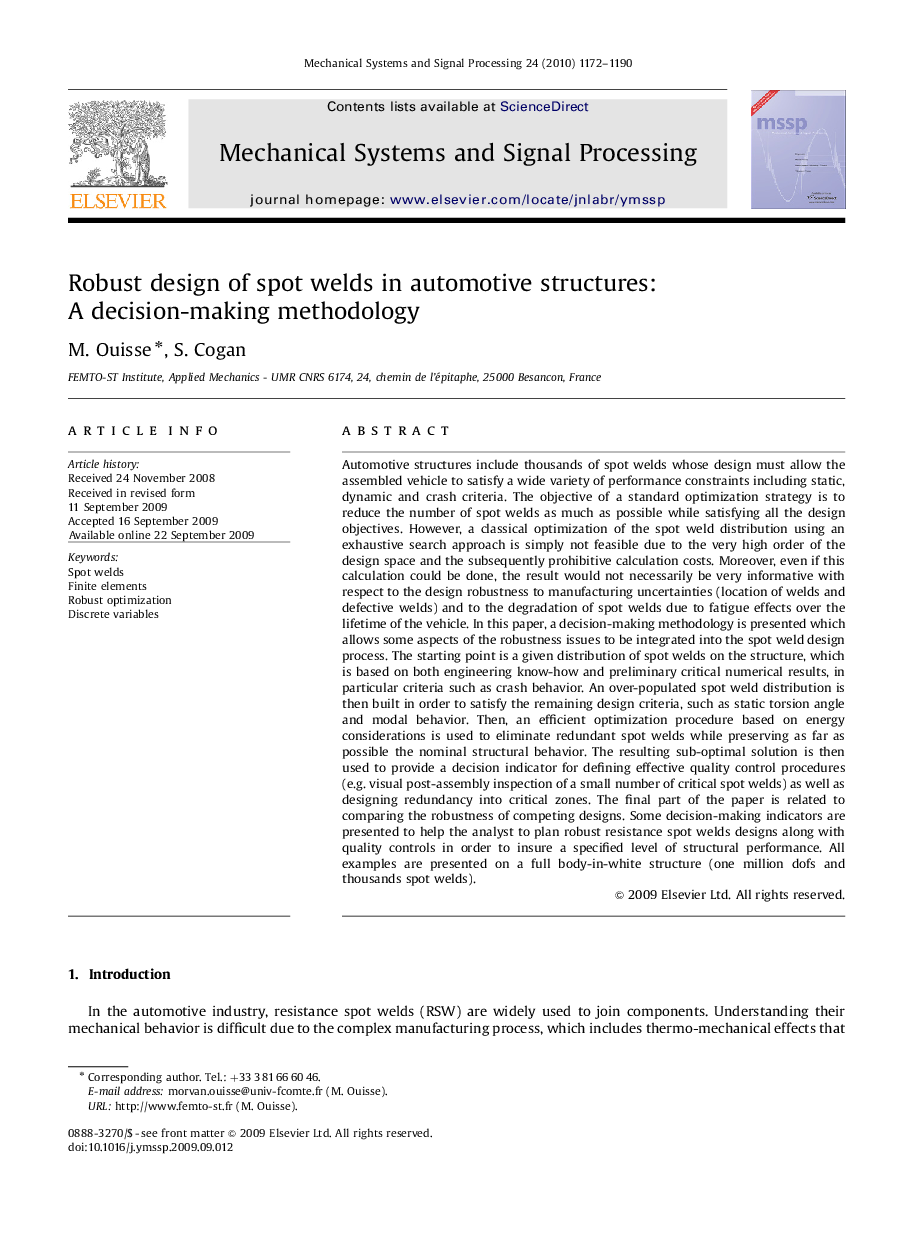| Article ID | Journal | Published Year | Pages | File Type |
|---|---|---|---|---|
| 561769 | Mechanical Systems and Signal Processing | 2010 | 19 Pages |
Automotive structures include thousands of spot welds whose design must allow the assembled vehicle to satisfy a wide variety of performance constraints including static, dynamic and crash criteria. The objective of a standard optimization strategy is to reduce the number of spot welds as much as possible while satisfying all the design objectives. However, a classical optimization of the spot weld distribution using an exhaustive search approach is simply not feasible due to the very high order of the design space and the subsequently prohibitive calculation costs. Moreover, even if this calculation could be done, the result would not necessarily be very informative with respect to the design robustness to manufacturing uncertainties (location of welds and defective welds) and to the degradation of spot welds due to fatigue effects over the lifetime of the vehicle. In this paper, a decision-making methodology is presented which allows some aspects of the robustness issues to be integrated into the spot weld design process. The starting point is a given distribution of spot welds on the structure, which is based on both engineering know-how and preliminary critical numerical results, in particular criteria such as crash behavior. An over-populated spot weld distribution is then built in order to satisfy the remaining design criteria, such as static torsion angle and modal behavior. Then, an efficient optimization procedure based on energy considerations is used to eliminate redundant spot welds while preserving as far as possible the nominal structural behavior. The resulting sub-optimal solution is then used to provide a decision indicator for defining effective quality control procedures (e.g. visual post-assembly inspection of a small number of critical spot welds) as well as designing redundancy into critical zones. The final part of the paper is related to comparing the robustness of competing designs. Some decision-making indicators are presented to help the analyst to plan robust resistance spot welds designs along with quality controls in order to insure a specified level of structural performance. All examples are presented on a full body-in-white structure (one million dofs and thousands spot welds).
